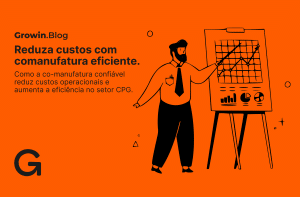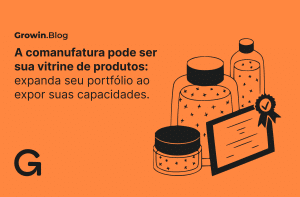As the beverage industry continues to evolve, staying ahead of the trends is crucial for brands looking to innovate and capture the attention of modern consumers.
In our e-book, “Innovative Beverages: From Ideation to Launch,” we explore the most significant trends shaping the market. It was based in a former webinar, presented by GrowinCo. and Mintel, as an informative session that delved into the latest trends and innovations within the beverage industry.
About the e-book: Innovative Beverages
The webinar featured insights from industry experts Lynn Dornblaser, Raphael Traticoski, and Alejandro Devoto, who shared their extensive knowledge and experience on various aspects of the market.
In addition to the key trends you’ll read below, the e-book explore several other emerging trends in the beverage industry. These include the growing popularity of “drink your meal” beverages, energy drinks, probiotics and prebiotics and sugar reduction in beverages.
The “Innovative Beverages” e-book also explores the role of technology in shaping the industry, with innovations like precision fermentation and artificial intelligence enabling the creation of plant-based alternatives.
Furthermore, GrowinCo. provided valuable market insights, including data on the differences between North and South American beverage markets, packaging innovations, and the rising interest in premium spirits and wine products in Latin American markets.
So, without further ado, here’s a sneak peak of the trends you can read more about in our e-book:
1. The Rise of Mocktails and Alcohol-Free Alternatives
One of the most impactful trends in the beverage industry is the growing demand for mocktails and alcohol-free alternatives.
As health-conscious consumers seek to reduce their alcohol consumption, they are turning to sophisticated, non-alcoholic beverages that offer the same enjoyment without the alcohol.
Brands are responding by expanding their product lines to include everything from alcohol-free wines and beers to sparkling juices designed specifically for mocktails.
This trend is not just about health; it’s also about providing consumers with more choices and enhancing their social experiences without alcohol.
Brands are also investing in innovative packaging solutions to enhance the mocktail experience, such as single-serve cans and eco-friendly materials. As a result, it reflects a broader movement towards sustainability and convenience in the beverage industry.
According to Mintel data, 28% of North American consumers prefer to purchase “clean” beverages over traditional sodas, indicating a shift towards healthier alternatives.
2. Clean Energy Beverages: A New Take on Boosting Energy
The traditional energy drink market is undergoing a transformation as consumers look for healthier, cleaner options.
The demand for “clean energy” drinks—those that provide a natural energy boost without the excessive caffeine and sugar found in conventional energy drinks—is on the rise.
These beverages often feature ingredients like green tea extract, adaptogens, and plant-based proteins that offer sustained energy without the crash. In fact, younger consumers prioritize health and wellness, making the clean energy drinks poised to become a major player in the beverage market.
Another significant aspect of clean energy drinks is their focus on natural and organic ingredients, which appeal to health-conscious consumers. Brands are also leveraging functional ingredients like nootropics to offer cognitive benefits alongside energy boosts.
3. Sustainability: More Than Just a Buzzword in the Beverage Industry
Sustainability is becoming a non-negotiable aspect of the beverage industry. Consumers are increasingly holding brands accountable for their environmental impact, demanding transparency and tangible efforts toward sustainability.
From eco-friendly packaging to sustainable sourcing of ingredients, brands are exploring various ways to reduce their carbon footprint and appeal to eco-conscious consumers. However, the challenge lies in balancing sustainability with affordability, as many consumers are still hesitant to pay extra for green products.
This trend is pushing companies to innovate in ways that are both sustainable and cost-effective.
According to a report by the Beverage Industry Environmental Roundtable, member companies reduced their packaging material use by an average of 1.5% between 2015 and 2019 and a 2021 study by IBM found that 54% of consumers are willing to pay a premium for sustainable products.
These trends highlight the evolving preferences of consumers and the innovative approaches brands are taking to meet these demands.
As the beverage industry continues to transform, staying informed and adaptable will be key to thriving in this competitive market.
Thirsty for more?
Download our e-book to dive deeper into these exciting trends and discover how they’re reshaping the beverage landscape. You’ll find in-depth analysis, expert insights, and actionable strategies to help your brand stay ahead of the curve. Don’t miss out on this valuable resource for beverage industry professionals!




